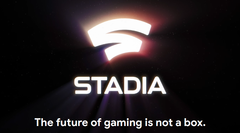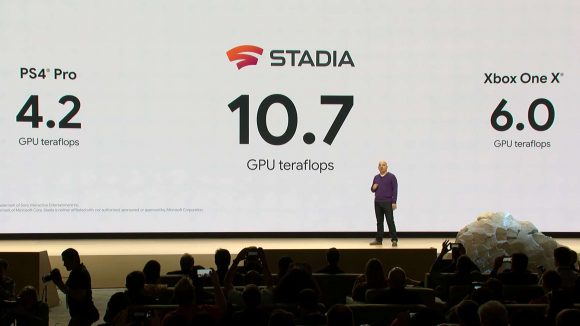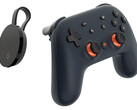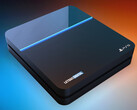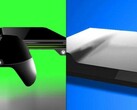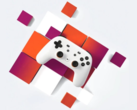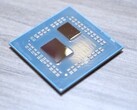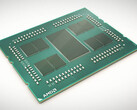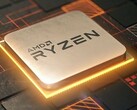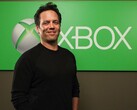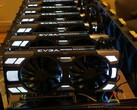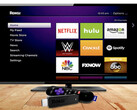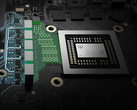It’s been a seemingly win-win situation for both Google and AMD in the gaming world. Google has announced the Stadia cloud gaming service that has the potential to be appropriately enough a game-changing enterprise, while AMD has been chosen to provide the necessary GPUs. Both the PlayStation 4 and Xbox One also use custom AMD chips, so yet again the red team has demonstrated its domination over GPU provision in this specific area.
As for Google Stadia, this could be the service gamers have been dreaming of. The service utilizes datacenters located in countries all over the world to provide a streaming gaming ability that only requires the user to possess an appropriate device to play on, a high-speed Internet connection, and a Google Stadia subscription. Subscribers will be able to play their favorite titles via the Chrome browser or even leap into games immediately by clicking on a “play now” option in related YouTube videos.
In terms of hardware specifications, the custom AMD Radeon datacenter GPUs will apparently provide 10.7 teraflops of computer performance. Google offered a handy comparison for perspective: The Xbox One X manages 6 teraflops of performance while the PlayStation 4 churns out 4.2. This means Google Stadia offers more GPU performance than both the Xbox One X and PS4 combined. It's true that AMD’s own Radeon VII graphics card offers a peak single precision compute performance of 13.8 teraflops, but the teraflop count for the Stadia GPU is still impressive when compared to its main console competition…and multiple GPUs can be allocated when necessary, thus boosting the compute performance.
The next-generation PlayStation and Xbox consoles will likely surpass Google Stadia in regard to hardware specifications and compute performance, but this new cloud gaming service has the distinct advantage that it does not show any prejudice against your existing hardware. You don’t need to own thousands of dollars' worth of high-end computer components to enjoy the latest Triple-A title, although you might want to consider upgrading your Internet service if it isn’t up to scratch.
Google Stadia is expected to come to the USA, Canada, UK, and parts of Europe this year; although the launch date and subscription price haven’t been announced yet. But for 4K HDR @ 60 FPS instant gaming on almost any device, with 8K gaming at over 120 FPS planned for the future, it’s likely Google Stadia subscription could be set at a premium price point in comparison to other cloud gaming services.
Cloud-optimized AMD datacenter GPUs and robust software tools enable developers to create exceptional, scalable, high-performance game streaming experiences
San Francisco, Calif.
<time datetime="2019-03-19T12:00:00Z">03/19/2019</time>
Building on a close, long-term collaboration between the two companies, AMD (NASDAQ: AMD) today announced that Google selected high-performance, custom AMD Radeon datacenter GPUs for its Vulkan® and Linux®-based Google Stadia. Google announced the platform today at the Game Developers Conference (GDC) in San Francisco, Calif. AMD also is supporting Google with its software development tools and Linux-based, open-source Vulkan driver to help game developers optimize future titles to run on the new GPU-powered platform.
“By combining our gaming DNA and datacenter technology leadership with a long-standing commitment to open platforms, AMD provides unique technologies and expertise to enable world-class cloud gaming experiences,” said Ogi Brkic, corporate vice president and general manager of the Datacenter GPU Business Unit at AMD. “AMD is delighted to work with Google in its effort to bring amazing gaming experiences to legions of gamers around the world with the reliability and no-compromises performance they expect.”
“We’ve worked closely with AMD for years on this project, leading to the development of a custom GPU with leading-edge features and performance for Google Stadia,” said Dov Zimring, Google Stadia developer platform product lead. “Google and AMD share a commitment to open-source with expertise in Vulkan, open-source Vulkan GPU drivers, and open-source graphics optimization tools. We’re humbled by the spirit of innovation and collaboration that exists throughout the gaming industry and look forward to pioneering the future of graphics technology with game developers, in open-source.”
High-performance AMD Datacenter GPUs
Streaming graphics-rich games to millions of users on demand and from the cloud requires ultra high-performance processing capabilities to minimize latency and maximize game performance. It also requires advanced technologies to tackle unique datacenter challenges, including security, manageability, and scalability.
Custom AMD high-performance Radeon datacenter GPUs for Google Stadia include:
- Second-generation High-Bandwidth Memory (HBM2) to provide power savings in a compact footprint;
- Critical datacenter features such as Error Correcting Code (ECC)1 protection to help ensure data integrity;
- Fast, predictable performance with security features for cloud-based gaming, via the industry’s first hardware-based GPU virtualization solution built on industry standard SR-IOV (Single-Root I/O Virtualization) technology.
The AMD graphics architecture supports a wide range of today’s gaming platforms – from PCs to major game consoles – enabling developers to optimize their games for a single GPU architecture and extend these benefits across multiple platforms which now include large-scale cloud gaming platforms.
Robust Developer Tools
Powerful AMD software tools enable developers to optimize their games and other applications for AMD Radeon GPUs. AMD empowers developers with a range of options and broad flexibility to optimize the performance of GPU-based applications based on a long-standing commitment to open-source platforms, including Linux-based drivers and support for the low-level Vulkan API that provide broad control over the performance, efficiency and capabilities of AMD Radeon GPUs.
The open-source AMD Linux drivers allow Google and its development partners to inspect the code and understand exactly how the driver works, enabling them to better optimize their applications to interface with AMD Radeon GPUs. The driver also contains an application tracing component that, together with the AMD Radeon GPU Profiler (RGP), provides access to detailed, low-level information about how workloads run on AMD Radeon GPUs. Identifying timing issues that might suggest potential optimizations, this capability dramatically improves developers’ ability to create applications that deliver the best possible performance on AMD Radeon GPUs.
The AMD Radeon GPU Profiler allows game developers to visualize exactly how their application is utilizing the GPU, including how graphics and compute thread groups occupy the GPU. Developers are then able to track event timing and optimize their games for Google Stadia. RGP also interoperates with the popular open-source RenderDoc graphics debugging tool to give developers deeper real-time insights into the rendering of each frame, reducing the time required to debug and profile frames during the development process.
RGP operates the same way in a virtualized environment as it does when running on a dedicated PC client, making it easy for developers to optimize their applications for virtualized GPUs in large scale environments as they would for any other gaming platform.
For more information about the Stadia game streaming platform, visit the Google blog here.
Supporting Resources
- Learn more about AMD cloud gaming solutions here
- Learn more about Radeon GPU Profiler here
- Learn more about RenderDoc here
- Discover AMD Open Software support on GPUOpen.com
- Become a fan of AMD on Facebook
- Follow AMD on Twitter
- Follow Radeon™ graphics on Twitter
About AMD
For 50 years AMD has driven innovation in high-performance computing, graphics and visualization technologies ― the building blocks for gaming, immersive platforms and the datacenter. Hundreds of millions of consumers, leading Fortune 500 businesses and cutting-edge scientific research facilities around the world rely on AMD technology daily to improve how they live, work and play. AMD employees around the world are focused on building great products that push the boundaries of what is possible. For more information about how AMD is enabling today and inspiring tomorrow, visit the AMD (NASDAQ: AMD) website, blog, Facebook and Twitter pages.


 Deutsch
Deutsch English
English Español
Español Français
Français Italiano
Italiano Nederlands
Nederlands Polski
Polski Português
Português Русский
Русский Türkçe
Türkçe Svenska
Svenska Chinese
Chinese Magyar
Magyar